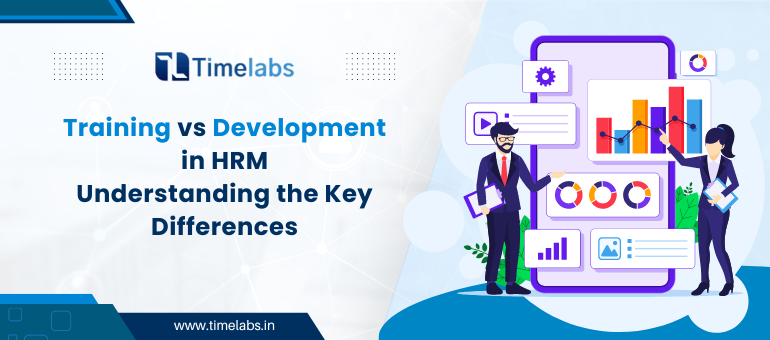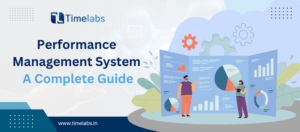In the domain of Human Resource Management (HRM), the focus intensifies on training and development, pivotal components aimed at enriching employees’ cognition, aptitude, and efficacy. Despite their interchangeable usage, it is paramount to discern the notable disparities between training and development and their profound ramifications on organizational progression and employee evolution.
Introduction
Training and development emerge as linchpins within HRM strategies, endeavoring to fortify employee performance, efficacy, and organizational triumph. While both aspire to augment employee competencies and knowledge, grasping their inherent disparities is instrumental for strategic planning and execution.
Definition of Training
Training epitomizes a transient learning trajectory aimed at furnishing employees with requisite knowledge and skills indispensable for proficient execution of prevailing job responsibilities. Tailored to job-specific exigencies, its focal point lies in ameliorating employees’ performance and output within their existing roles.

Training initiatives encompass an array of structured activities including workshops, seminars, on-the-job tutelage, and e-learning modules, meticulously designed to impart task-relevant proficiencies and cognizance. Its prime directive is to bolster employees’ proficiencies within extant roles, ensuring alignment with organizational requisites.
Definition of Development
Diverging from training, development delineates a protracted, incessant progression underscored by employees’ growth and trajectory within their professional journey. It accentuates the expansion of employees’ comprehensive cognizance, skills, and capabilities transcending immediate job prerequisites, priming them for forthcoming roles and obligations within the organizational echelon.

Development endeavors are architected to nurture personal and professional ascendancy, encompassing facets such as leadership cultivation, critical ratiocination, problem-solving acumen, and communication prowess, all culminating in employees’ holistic maturation.
Purpose and Objectives
The intent and objectives of training and development are divergent, contingent upon their unique essence and orientation:
Training:
- To furnish employees with the requisite proficiencies and knowledge for task-specific efficacy.
- To amplify employees’ task performance and productivity.
- To foster organizational agility and adaptiveness.
- To ensure compliance with organizational protocols, guidelines, and statutes.
- To address delineated skill lacunae or areas meriting enhancement as discerned through performance evaluations.
Development:
- To nurture employees’ overarching evolution and maturation.
- To equip employees for prospective roles and responsibilities within the organizational stratum.
- To engender leadership acumen, critical ratiocination, and decisive sagacity.
- To cultivate a culture of erudition and perpetuate a cycle of continuous refinement.
- To buttress employees’ career trajectory and professional evolution.
Must read: The Best Way to Track Your Field Service Team Attendance
Short-Term vs. Long-Term Focus
A salient dichotomy between training and development resides in their temporal outlooks and emphasis:
Training:
- Predominantly a transitory endeavor directed at acquiring discrete proficiencies and cognizance germane to specific job facets or duties.
- Pivotally inclined towards immediate requisites and objectives, facilitating expeditious application of assimilated knowledge within extant roles. Yielding tangible and immediate outcomes is the hallmark of training initiatives.
Development:
- A protracted endeavor encapsulating a broader vista of employees’ evolution and advancement.
- Embodies an enduring odyssey fostering employees’ overall competence and ascendancy beyond the precincts of immediate job mandates, cultivating a robust edifice of proficiencies and capabilities enduring across employees’ professional trajectories.
Job-Specific vs. Career-Oriented
Training and development diverge concerning their fixation on task-specific aptitudes vis-à-vis broader career progression:
Training:
- Emphasizes the impartation of task-specific skills and cognizance requisite for optimal performance within extant job roles.
- Endeavors to augment employees’ role-specific competencies, ensuring adroit execution of job responsibilities.
Development:
- Embraces a holistic perspective, steering focus towards employees’ overarching career ascension and progression.
- Seeks to fortify employees’ skill set, cognizance, and capabilities beyond the confines of extant job requisites, priming them for loftier responsibilities and leadership roles.
Must read: The Power of HR Software in Enhancing Absence Management
Specific vs. Open Objectives
Training and development exhibit contrasting objectives:
Training:
- Harbors precise, well-defined objectives tailored to address specific job exigencies or skill voids.
- Concrete and quantifiable, training objectives are geared towards enhancing employees’ performance in delineated realms.
Development:
- Embraces more open-ended objectives, encompassing broader proficiencies, cognizance, and personal enrichment, devoid of immediate or explicit performance metrics.
- The thrust of development initiatives is more conceptual and philosophical, aiming to mould employees’ attitudes, comportment, and mindset towards sustained success.
Group Training vs. Individual Development
Dispensation and focus vary concerning the delivery of training and development initiatives:
Training:
- Predominantly executed in a collective milieu, wherein multiple employees partake in structured learning endeavors.
- Conduits of training sessions, whether trainers or subject matter experts, spearhead instruction and guidance to participants. Group dynamics facilitate efficient knowledge dissemination and communal learning experiences.
Development:
- Tailored and personalized, emphasizing individual-centric progression.
- While certain facets may entail group activities such as workshops or seminars, the onus of development rests primarily on individual employees. Encouraging autonomy and self-direction, employees are urged to steer their developmental journey, identifying growth opportunities and avenues for self-directed learning and enhancement.
Benefits and Impact
Both training and development proffer myriad benefits to organizations and employees:
Training:
- Augmented job performance and productivity.
- Elevated employee competencies and proficiencies.
- Enhanced organizational nimbleness and adaptability.
- Adherence to organizational benchmarks, protocols, and statutory mandates.
- Mitigated employee attrition and heightened job contentment.
Development:
- Amplified leadership aptitude and potential for career progression.
- Enhanced critical ratiocination, problem-solving prowess, and decision-making acumen.
- Elevated employee engagement and motivation.
- Cultivation of a culture of learning and ethos of perpetual refinement.
- Reinforced organizational dexterity and innovation.
Must read: What is a Performance Management System: A Complete Guide
Importance of Training and Development in HRM
Training and development constitute linchpins in the realm of HRM, furnishing impetus to organizational growth and triumph. Enumerated are seminal rationales underscoring the indispensability of training and development:

- Amplification of employee competencies and cognizance: Initiatives in training and development equip employees with novel proficiencies, cognizance, and competencies imperative for their job roles, ensuring adeptness in task execution and contribution towards organizational objectives.
- Fostering employee engagement and contentment: Proffering avenues for training and development attests to organizational commitment towards employee growth and enrichment. This fosters heightened employee engagement, contentment, and allegiance, engendering heightened productivity and retention.
- Nurturing a culture of learning and incessant improvement: Training and development initiatives engender a culture of learning and ceaseless refinement within the organizational fabric. By investing in employee development, organizations catalyze a proclivity towards continuous upskilling and embracement of lifelong learning.
- Nurturing organizational growth and adaptability: Initiatives in training and development empower organizations to cultivate a skilled and adaptable workforce adept at meeting evolving business exigencies. By arming employees with requisite competencies and cognizance, organizations adeptly respond to shifting market dynamics and technological innovations.
- Attracting and retaining top-tier talent: Organizations accord primacy to training and development are better poised to allure and retain top-tier talent. Provision of growth and advancement opportunities signifies organizational commitment towards employees’ holistic prosperity and long-term flourishing.
- Augmenting organizational performance: Effective training and development initiatives redound to augmented organizational performance by enhancing employee competencies, cognizance, and motivation. This culminates in escalated productivity, superior output quality, and a competitive edge in the marketplace.
Best Practices for Effective Training and Development
To ensure efficacy of training and development endeavors, adherence to best practices is imperative:
- Undertake a comprehensive needs assessment: Preceding the design of training and development blueprints, organizations should conduct a thorough needs assessment to pinpoint skill lacunae and developmental foci. This aids in tailoring initiatives to address specific organizational and employee requisites.
- Harmonize training and development with strategic imperatives: Initiatives in training and development ought to be aligned with organizational strategic objectives. By tethering employee development efforts to overarching strategic direction, organizations maximize the impact of training and development on organizational performance.
- Employ a melange of training modalities: Adoption of diverse training modalities caters to variegated learning proclivities and preferences. This spans classroom instruction, e-learning modules, on-the-job tutelage, coaching, mentoring, and simulated scenarios.
- Furnish sustained support and reinforcement: Training and development should be construed as an ongoing process rather than a singular event. Organizations should furnish sustained support, reinforcement, and follow-up initiatives to ensure that employees adeptly apply newly acquired proficiencies and cognizance in their routine undertakings.
- Gauge and evaluate outcomes: Adoption of metrics and evaluation mechanisms is indispensable for gauging the efficacy of training and development initiatives. This encompasses post-training assessments, feedback surveys, performance evaluations, and tracking of key performance indicators pertinent to employee development.
Conclusion
In summation, while training and development emerge as conjoined constituents in HRM parlance, they embody palpable distinctions in their temporal orientations, objectives, foci, and repercussions. Training pivots towards enhancing job-specific proficiencies, whereas development espouses broader career evolution and maturation. Both are instrumental in organizational ascendancy, employee engagement, and perpetual refinement. By grasping and harnessing the disparities between training and development, organizations orchestrate efficacious HRM strategies conducing to sustained triumph.
By integrating best practices in training and development, organizations nurture a culture of erudition, augment employee performance and productivity, and retain competitive viability amidst an ever-evolving business milieu.
Recall, within HRM domain, judicious investments in training and development underpin organizational and employee prosperity. Embracing a holistic approach amalgamating targeted training regimens with ongoing developmental endeavors precipitates a proficient, motivated, and adaptable workforce catalyzing organizational eminence.



